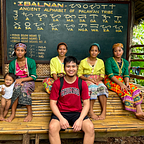Los Cuatro Nombres de José Rizal
The Four Names of José Rizal
This short essay was written on July 19, 2020 in commemoration of Dr. Jose Rizal’s 159 birth anniversary. Indeed, facts about the life and works of Rizal are already overflowing, yet to uncover the tales behind his “nombre” may offer us fascinating and additional insights; one might be even surprise to learn how closely associated it is in his life.
Dr. Jose Rizal, the man whose birthday we celebrate today, has a total of six names in its full kilometric form (two first names and four family names). Occasionally, the meaning, origin, and story behind one person’s name may present us additional insights or information regarding his or her character. As a matter of fact, it is something not done randomly or instantly; our parents/guardian draw inspiration somewhere before the child is baptized with a name which will be his or her forever long identity and label. On that account, this essay speaks of four of his names, namely Jose, Protasio, Rizal, and Mercado.
Jose. He was named after the well-known biblical figure and foster father of Jesus Christ, San Jose. His mother, Teodora Alonso, was a deboto of San Jose. Additionally, his nickname “Pepe” was derived from this. The saint’s name is usually followed by the Latin acronym P. P. which is an abbreviation for “Pater Putativus” or “Supposed Father” in English. Similar to the father figure saint, Rizal is considered by many as the father of Filipino Nationalism.
Protasio. The name comes from San Protasio. Together with San Gervaso, the two saints are known as the Christian martyrs of Milan, Italy whose feast day is also celebrated today, June 19. Naming a child after the saint celebrated on the day of birth is a common tradition in the Philippines (such as Andres Bonifacio who was named after San Andres whose feast is on November 30). Coincidentally, on Dec. 30 1896, the boy named Protasio will also be known as a martyr in the Philippines and likely the most venerated of them all.
Mercado. This name, which means “market” in Spanish, is the surname used by the paternal ancestors of Rizal starting from his great great grandfather, Domingo Lamco. Domingo was a Chinese merchant who migrated to the Philippines from Fujian, China and was baptized as a Christian in 1697. The Chinese merchant-migrant eventually married a Chinese-Mestiza and both gave birth to Francisco Mercado y Chinco. Francisco is the father of Juan Mercado y Monica and both father and son served as Capitan del Pueblo of Binan, Laguna. In 1818, Juan begat Francisco Engracio Mercado, the father of Jose Rizal.
Rizal. This is the name that we are most accustomed with since many towns, streets, schools, businesses, and even funeral services use this in their titles or brandings. In 1849, his father decided to use the surname “Rizal,” derived from Ricial which means “green pasture” in Spanish, in accordance to Gov. Gen. Claveria’s decree regarding the adoption of Spanish surnames to Filipino natives. The last name already serves as a spill of the Rizal family’s way of living. The Rizal family is an “inquilino” which means that they utilize borrowed land from the Dominicans of Calamba for a living. Unfortunately, the family was evicted from the town in 1888 and it became one of the most painful and eye opening moments in Jose Rizal’s life. In light of this name, the Rizal House in Calamba, Laguna was even painted green in 2009.
